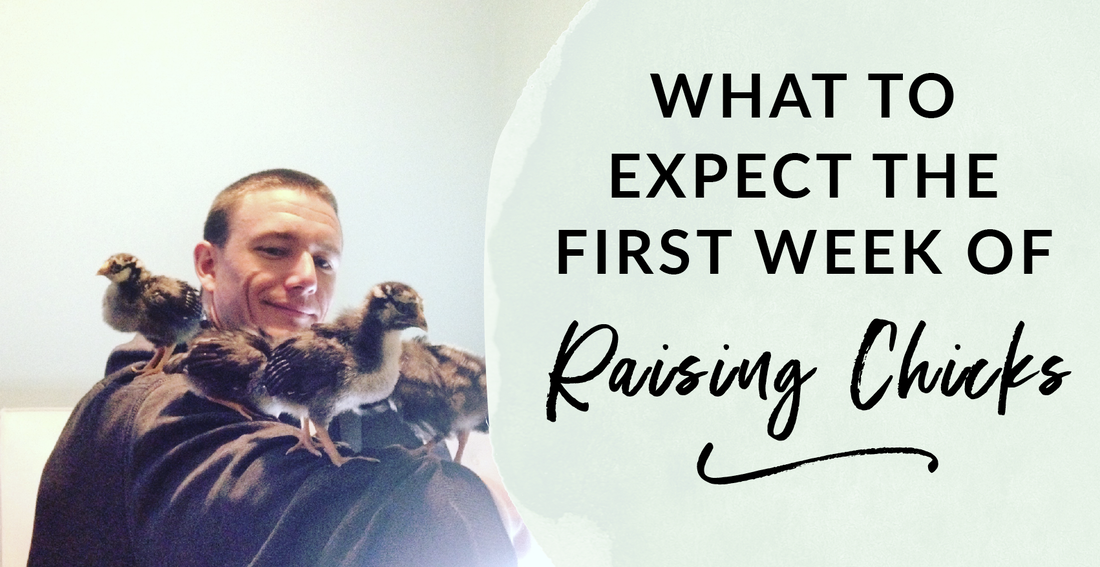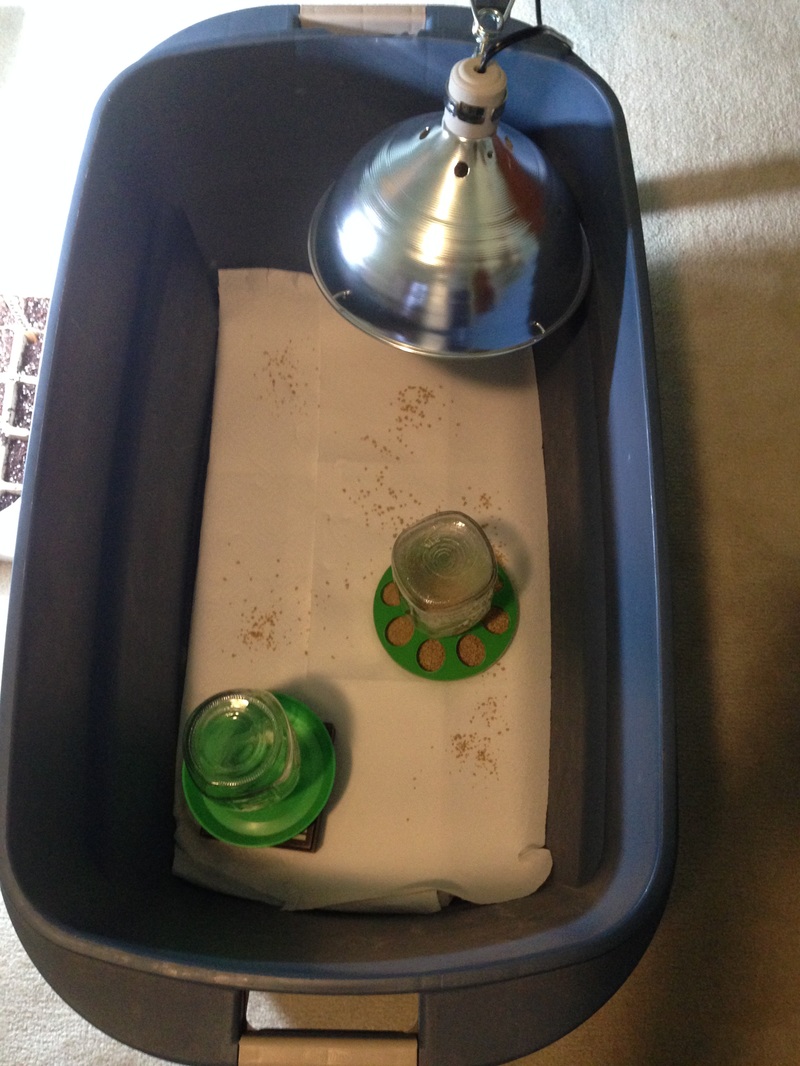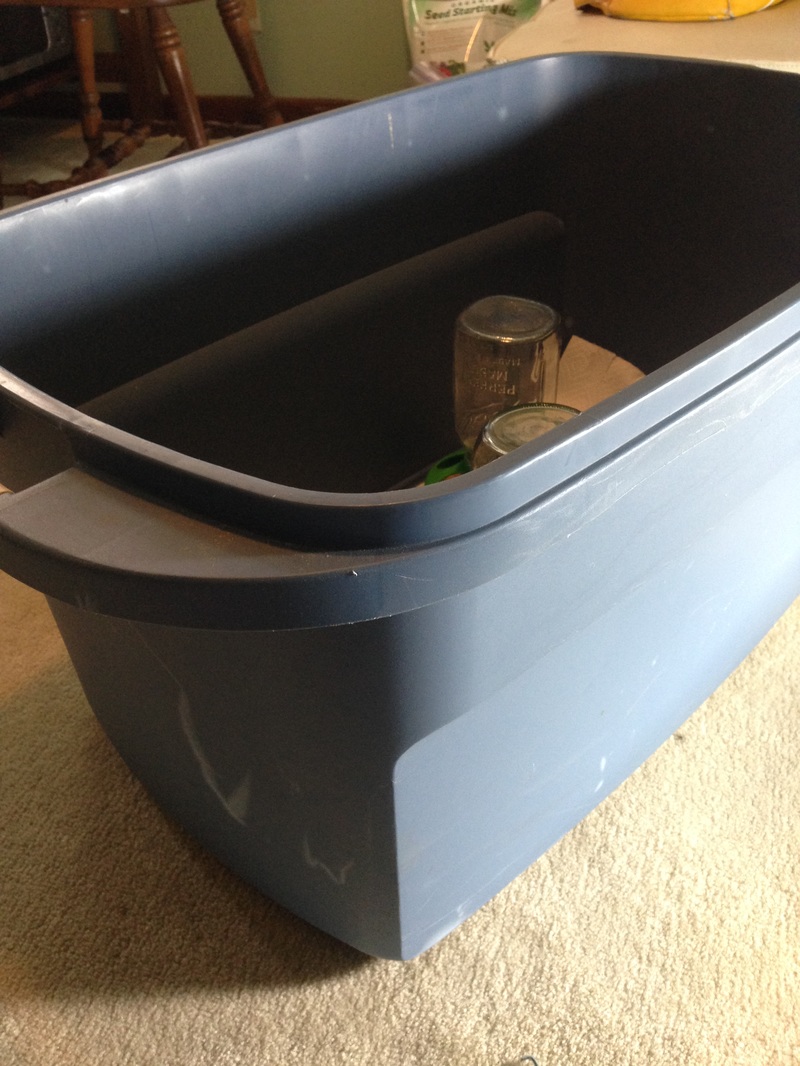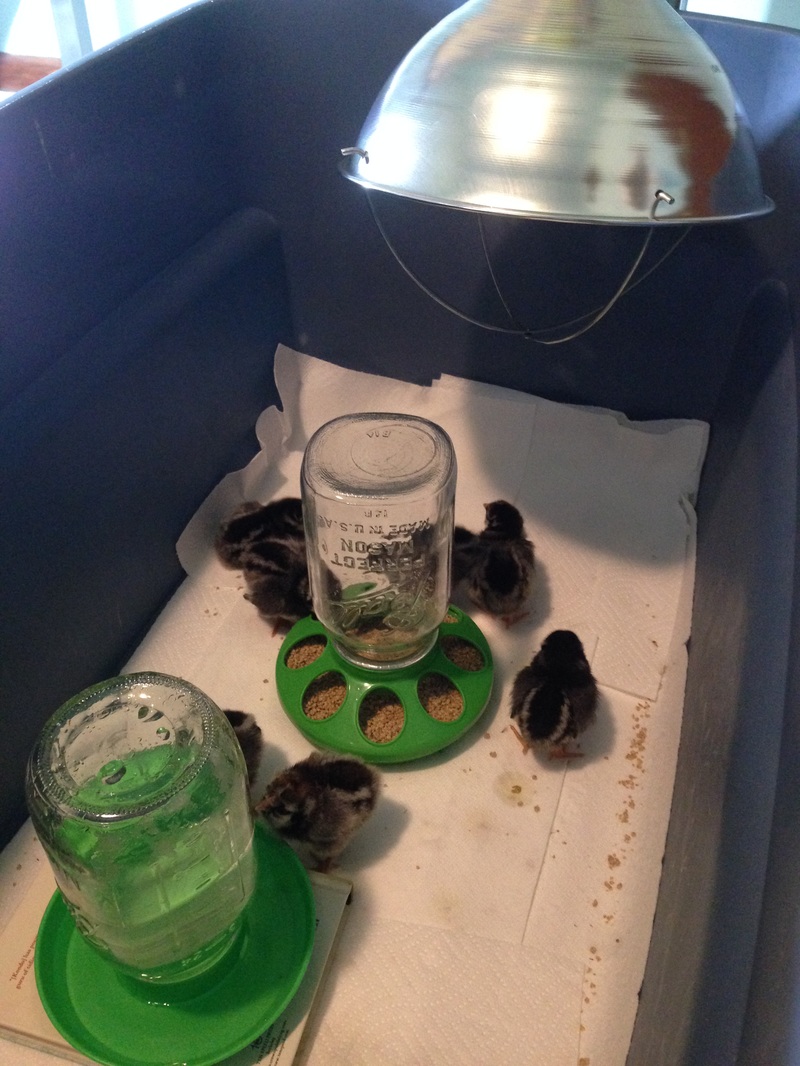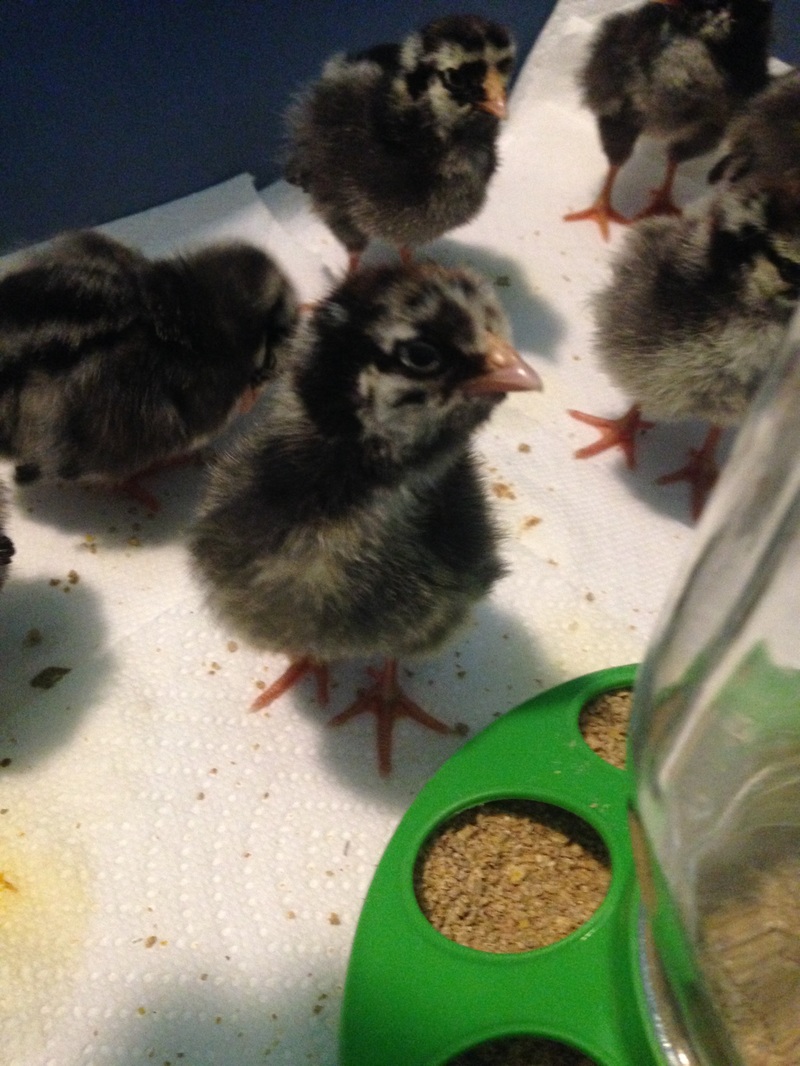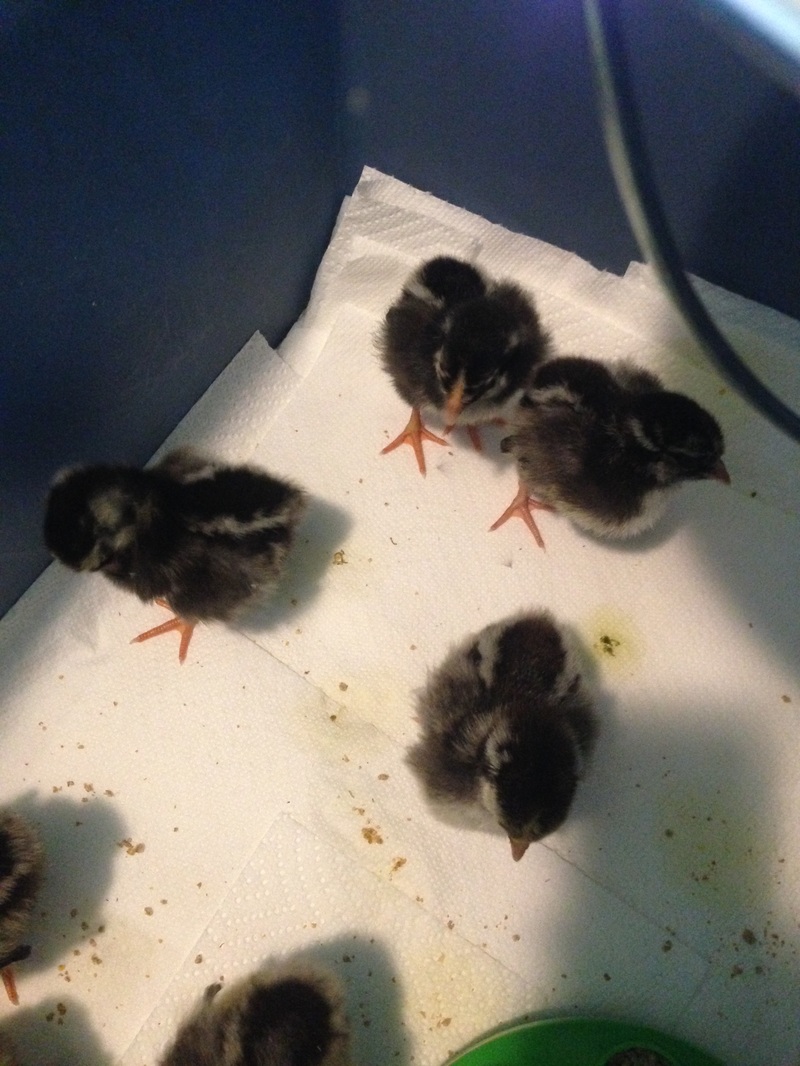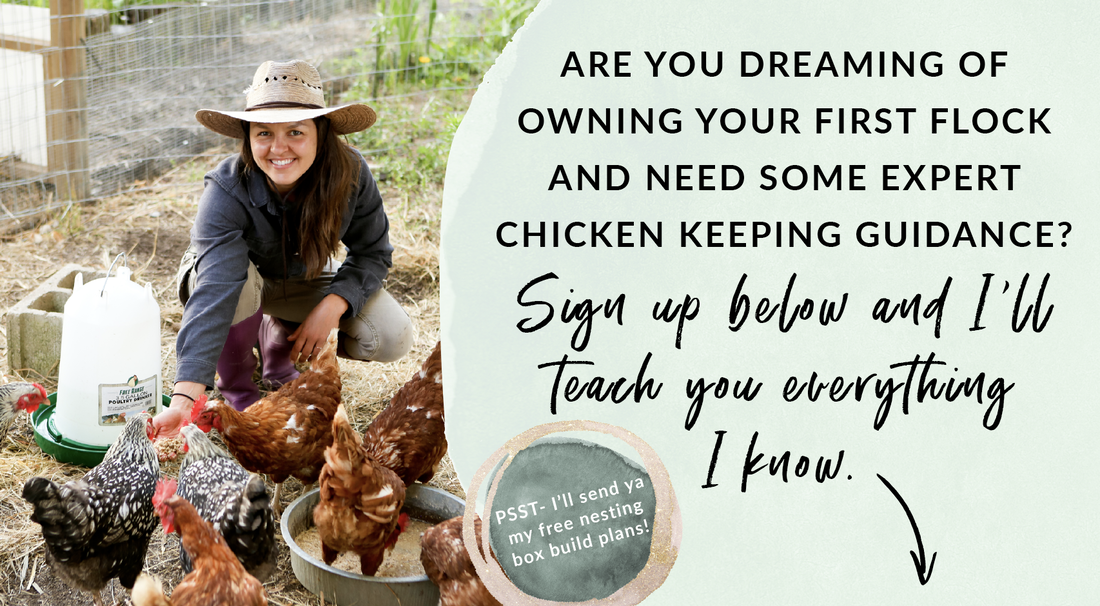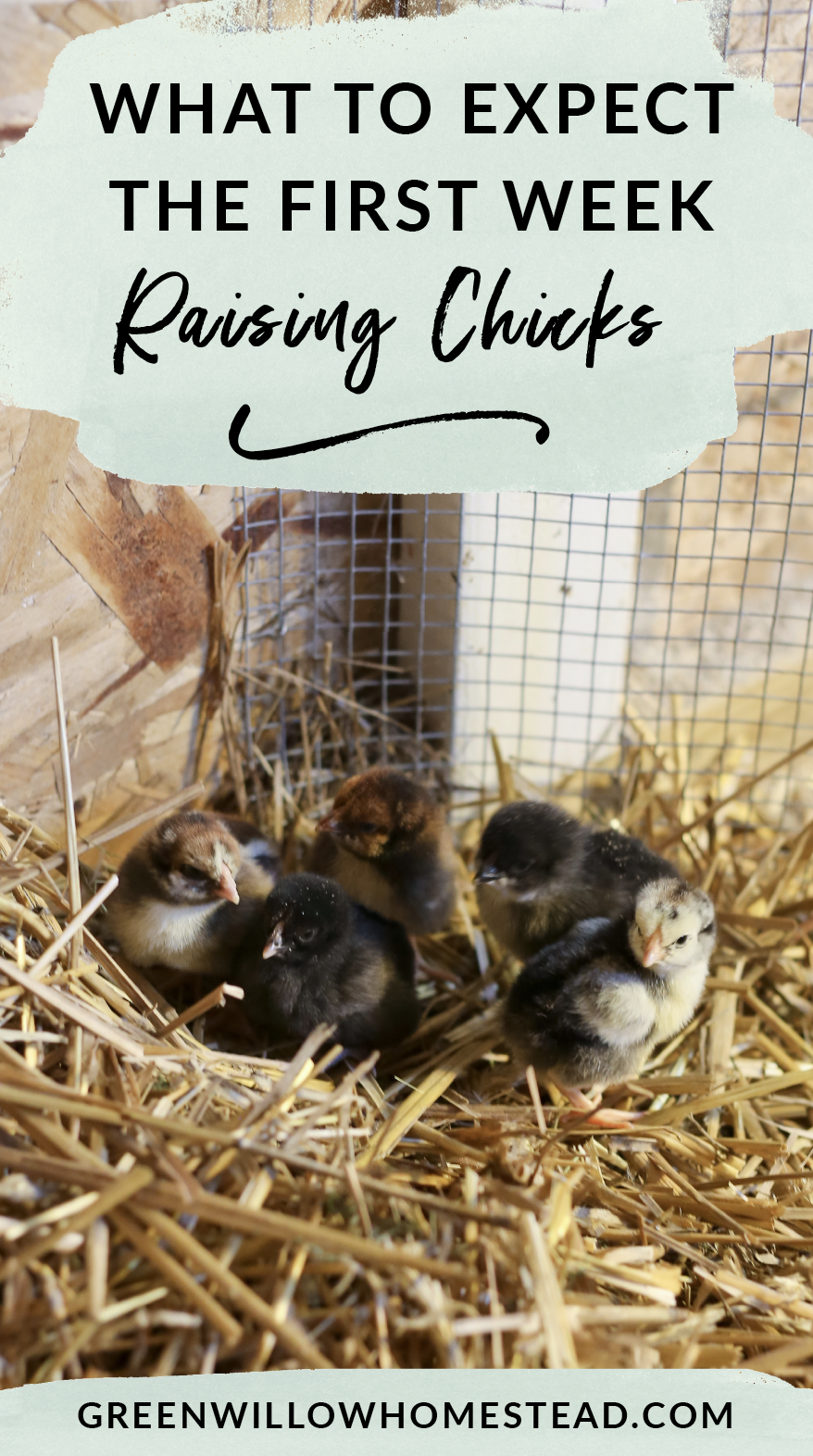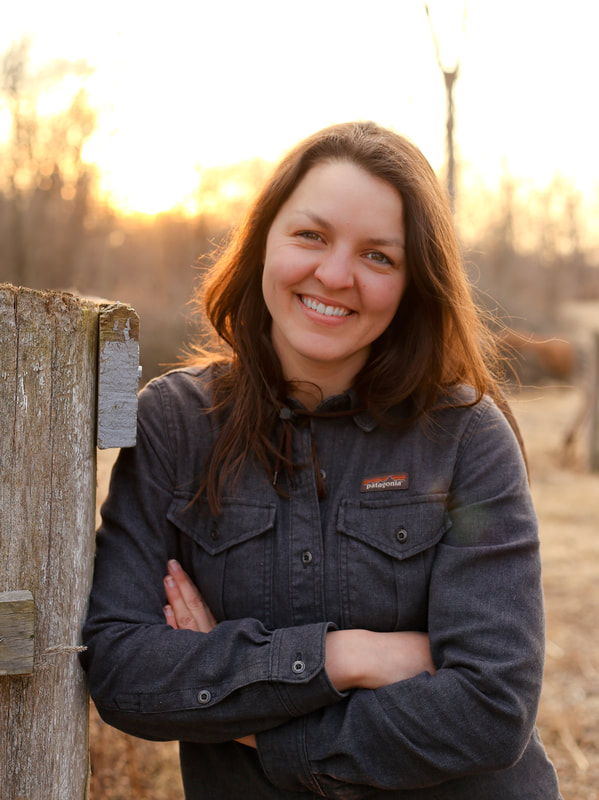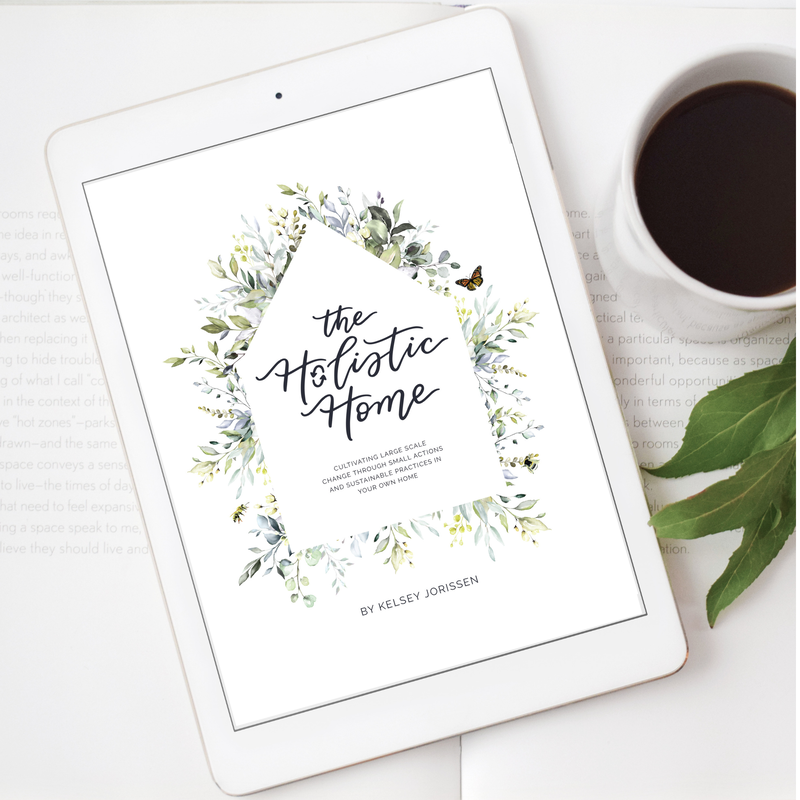|
The chicks are here! The chicks are here! As I was leaving Farm and Fleet this morning with a peeping cardboard box, a woman went to enter the store as I was exiting. She saw my wistful smile and then motioned to the box saying, "Ahhh, the sound of happiness."
She could not have been more right! This has been quite the adventure getting ready for these little birds. You can do as much research as you want, but nothing beats learning like actually doing the thing. They are beyond adorable and I am so happy to finally be a proud flock owner. To prepare for the chicks I spent less than $50, chicks included. Here is the price break down:
Supplies for Chicks
For a grand total of $105.18, that's pretty great considering we will have a steady supply of fresh eggs in five to six months. The day before I got the chicks I set everything up except for the water. I cleaned out the salvaged tub with water and vinegar and then let it dry. Then I lined the bottom with three layers of fresh paper towels. Using paper towels instead of shavings is a great way to start the chicks because then they don't mistake the litter for food and eat it, causing a nasty thing called pasty butt. Pasty butt is when their little chick pooper hole (scientific term: the vent) gets clogged up with hardened feces. When this happens you need to take warm water and a Q-tip and VERY GENTLY wipe away the hardened feces. The tissue around their vent is very fragile and can tear easily. The paper towels absorb wetness quickly and are a firm enough texture so the chicks don't slip and hurt themselves. You can also feed them a mixture of warm oatmeal and chick crumbles to help their digestive system pass the accidentally eaten litter. Once the paper towels were down I scattered the Chick Crumbles so the chicks could "forage" a bit for their food when they arrive. Silver Laced Wyandottes love to forage, so major points for flock momma! I set the waterer on top of a 2" platform, but that ended up being too tall for the chicks, so I set it up on a one inch platform instead. The platform keeps them from jumping up into their water dish and pooping in it. Granted, they still managed to get a leg in at times, luckily no pooping yet. You absolutely must change their water twice a day because of the poop factor. This practice, as well as using medicated feed, prevent the chance for coccidiosis, a microscopic parasitic organism that infect poultry. If you have a listless chick, chances are coccidiosis might be the culprit. To read more on the symptoms and treatments this is a fantastic article. The plastic bin is 2.5' tall which is the perfect height, you don't want anything less than 2' for the chicks. We will see how fast they outgrow this brooder. I'm sure it will be quicker than I anticipate! I turned on the infrared light two hours before I took off to get the chicks so it would warm up the brooder in time for their arrival. I secured it once with the clamp and then above (you can't see it in the picture below) I set some heavy books over the wire to keep it from falling into the brooder if the clamp ever decides to give out.
The chicks spend two days in transit before they arrive, meaning they live off the yolk sac until you pick them up and bring them home. One day is ideal, two days is okay, three days is not acceptable. Make sure you ask your hatchery what the time frame is before you order chicks. Chicks that have lived without water or food for three days are much more likely to get sick and die. If chicks will be kept for three days before you pick them up, they must be given food and water by the farm store or the hatchery.
Since the chicks spent two days in transit I put a tablespoon of organic molasses in cold water for their first batch of H2O. This gives them a much needed boost of energy after their long trip. When I got the chicks home from the store, I took each of them gently one by one and dipped their beaks into the water a few times, making sure they drank the water before I set them down inside the brooder. It looks like the little chicks are "chewing" the water when they are drinking. They lift their little heads up to get gravity to work in their favor and open and close their beaks. It definitely took a few tries to get them to drink, and then I even did it again for the extra lethargic looking chicks, just to be sure they were getting hydrated. Once in the brooder they all immediately started pecking the ground in search of food. Then they would stop dead in their tracks and fall asleep. It was like they all were dealing with a serious case of narcolepsy. I couldn't stop laughing.
I made sure to watch their behavior when it came to the brooder box infrared heat lamp. If the chicks are all huddled underneath the lamp, the box is too cold and you need to lower the lamp towards them. If the chicks are all on the other end of the brooder, the lamp is too hot and you need to bring it up a bit.
During this time I noticed that one of the chicks wasn't as active as the others. She wouldn't go to the drinking parties or the buffet line when all the others decided it was time for happy hour. At first I thought, she's an introvert, more power to her, but then I realized she wasn't drinking at all. I dipped her beak in the water a few more times, to which she would AVIDLY drink. Then she would lose her footing and start pecking around as if she had lost the waterer. I did some research and concluded she was blind. This breaks my heart and we had to cull her. These are the hard decisions we face when raising animals. Better to learn this lesson earlier than later.
For now, they are all pooping up a storm...
Thank you!You have successfully joined our subscriber list.
2 Comments
Tarrieann Dirschel
5/31/2016 12:35:08 am
Great reading, I really enjoyed your chick stores. I'm new to chick raising myself! I went with the hatch your own side of it and it's been very interesting. There is a learning curve. I hope I've finally mastered it.
Reply
Kelsey
6/1/2016 05:31:10 am
Hi Tarrieann,
Reply
Leave a Reply. |
Meet Kelsey,Thanks for stopping by Green Willow Homestead! From chicken rearing to composting, we've got our hands full and we love sharing what we've learned along the way. Follow along as we turn the 80 acres we call home into a farm that serves its community and a homestead that nourishes us throughout the seasons. Grab the EbookListen in!FREE Guide!Tune in to our YouTube ChannelInspirationsCategories
All
Favorite Books of 20241. Erosion
2. Braiding Sweetgrass 3. As Long As Grass Grows 4. The Small Scale Poultry Flock 5. The Zero Waste Solution Archives
April 2024
|
FOLLOW KELSEY ON INSTAGRAM!
As an Amazon Associate I earn from qualifying purchases. |

